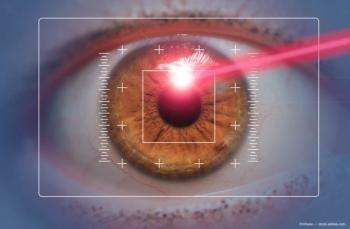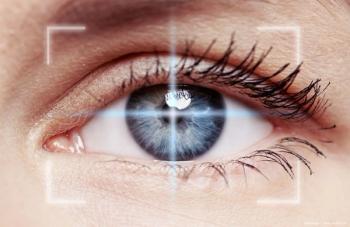
Innovations move refractive surgery on path back to the surface
Refractive surgery has followed an evolving course over the past 20 years based on the availability of new technologies and understanding of the mechanisms for problems underlying various procedures. Into the future, surgeons can expect a continued move back to the surface with sub-Bowman's keratomileusis and pharmacologically modulated PRK.
Key Points
Delivering a keynote address during a portion of the program devoted to surface ablation, Dr. Marshall, head of ophthalmology, Kings College, London, said he expects the next generation of procedures will involve sub-Bowman's keratomileusis (SBK) and PRK with modifications that are expected to enhance patient outcomes.
"Most surgeons are happy with current procedures, but there is always room for improvement," Dr. Marshall said. "LASIK continues to be the most widely used procedure in the United States, whereas surface procedures are more popular in Europe. In the future, the stromal procedures will be coming more toward the surface, and the surface procedures will be improved by better control of wound healing."
"Taking the epithelium off also results in pain, but unless both Bowman's membrane and the stroma are damaged, there is no haze," Dr. Marshall said. "While we have tried circumventing the haze using steroids and nonsteroidal anti-inflammatory drugs, haze is an ongoing problem in some patients."
The introduction of LASIK marks the beginning of the second generation of excimer laser refractive surgery, he said. Initially performed with the same lasers used for PRK, it was novel in the sense that it avoided epithelial damage and, therefore, addressed the PRK-related problems of haze and pain. Subsequent research defining the corneal microstructure and the effects of LASIK on corneal biodynamics raised concern, however.
"The superficial stroma is structurally strong, whereas the posterior two-thirds of the stroma is weak," Dr. Marshall said. "We also know the cornea is weak in the center and becomes stronger moving laterally toward the limbus. In its original form, LASIK separated the strong cornea from the weak in terms of both depth and eccentricity, causing problems with biomechanical stability."
These findings prompted more in-depth studies of corneal biodynamics, applying engineering instrumentation to obtain the measurements. Using radial shearing interferometry to assess strain in the system, investigations compared a variety of scenarios, including deep versus shallow flaps, the effect of various side cuts, and of delamination in which the corneal lamellae are separated.
The results showed that delamination had little effect on structural integrity, whereas side cuts and flap thickness were important, Dr. Marshall said.
The third generation of excimer laser refractive surgery represented an attempt to return to the surface using the techniques of LASEK and epi-LASIK, he said. Experience with those procedures showed that, as with PRK, they were associated with a delay in wound healing. They appeared helpful for controlling haze, however.
"Although the epithelial cells release cytokines after these procedures, there is an uncoupling between the signals coming from the stromal keratocytes that provides a benefit for reducing haze, he said.
Nevertheless, there were problems with LASEK and epi-LASIK because lifting of the epithelium leads to rupture of the hemidesmosomes on the basal border of the basal epithelial cells.
"No matter how careful surgeons are to leave intact cells, these are cells that have been damaged and that will release cytokines that lead to haze," Dr. Marshall said. "Conceptually, therefore, LASEK could be a better procedure if the epithelial cells are killed when the flap is lifted and then replaced so the tissue serves purely as a biologic bandage contact lens."
Newsletter
Don’t miss out—get Ophthalmology Times updates on the latest clinical advancements and expert interviews, straight to your inbox.
















































.png)


